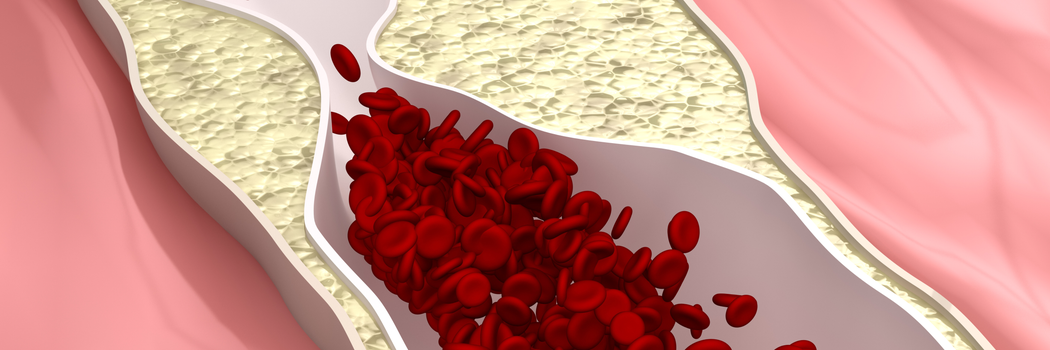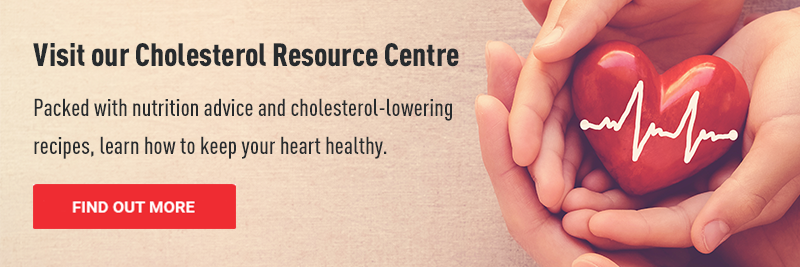
The low-down on cholesterol
Getting to grips with cholesterol is like tackling a bowl of alphabet soup. There’s HDL and LDL – and that can result in CVD.
So just what is it?
Cholesterol is a fat made in the liver and carried around our body in our blood. We need it to produce everything from hormones and vitamin D, to the acids that help us absorb nutrients from food and drinks.
But, like many things in life, you can have too much of a good thing.
When there’s too much ‘bad’ LDL cholesterol in your blood, it can damage your arteries, cause blood vessels to narrow or become blocked, and increase your risk of cardiovascular disease (CVD), heart attack and stroke. A high LDL blood cholesterol level is bad for you.
HDL on the other hand is ‘good’ cholesterol – it helps protect you against heart disease by picking up excess cholesterol in the blood and taking it back to the liver.
Download our free nutrition fact sheet for expert dietitian advice on heart health.
What causes high cholesterol?
There are a number of factors – some you can control, and some you can’t.
Things you can control include
Poor diet
Eating saturated fat, trans fats and foods high in cholesterol (such as red and processed meat and full-fat dairy products) can raise your cholesterol level.
Saturated fat raises your ‘bad’ LDL cholesterol level more than anything else in your diet. It is found in meats, full fat dairy products, coconut oil, chocolate, baked goods and deep-fried and processed foods.
Trans fatty acids (trans fats) raise your LDL cholesterol and lower HDL (good) cholesterol. They’re found in some fried and processed foods like biscuits and crackers.
Weight
Being overweight tends to raise your LDL, lower your HDL level, and increase your total cholesterol level. That’s bad news for the 2 in 3 New Zealand adults (67%) and 1 in 3 children who are overweight or obese.
Lack of exercise
Exercise helps boost your ‘good’ HDL cholesterol, and makes ‘bad’ LDL less harmful by increasing the size of the particles that carry cholesterol in the blood. Regular physical activity can help you lose weight, lower your LDL and raise your HDL cholesterol levels, yet around half (51%) of adults and 22% of children meet the national physical activity recommendations.
Smoking
Cigarette smoking damages the walls of your blood vessels, making them likely to accumulate fatty deposits. Smoking may also lower your level of ‘good’ HDL cholesterol.
Diabetes
High blood sugar contributes to higher LDL cholesterol and lower HDL cholesterol. High blood sugar also damages the lining of your arteries.
For more information on keeping your heart healthy including more great tips, be sure to read Heart healthy living.
Things you can’t control
Factors beyond your control may contribute to high cholesterol too. For example, your genetic makeup could keep cells from removing LDL cholesterol from your blood efficiently, or cause your liver to produce too much cholesterol.
Age
As you get older, your risk of heart disease increases.
Gender
Men are at higher risk of heart disease, while women’s risk grows after menopause and may equal that of men.
Heredity
High blood cholesterol can run in families. An inherited condition called familial hypercholesterolemia causes very high LDL cholesterol and may result in a heart attack at an early age.
How can you tell?
There are no signs or symptoms of high blood cholesterol, which means many people don’t know they have a problem until the damage is already being done.
The only way to check your blood cholesterol level is through a blood test.
Knowledge is power. When you know your numbers, you can discuss the results and any steps needed to improve or maintain your cholesterol levels with your GP.
Want more information?
Our nutrition fact sheets, created by accredited dietitians, provide the latest nutrition and lifestyle information to help you understand which foods are the best to eat. Click here to see the heart health nutrition fact sheets.

The latest nutrition advice, plus health and wellness tips delivered to your inbox monthly
